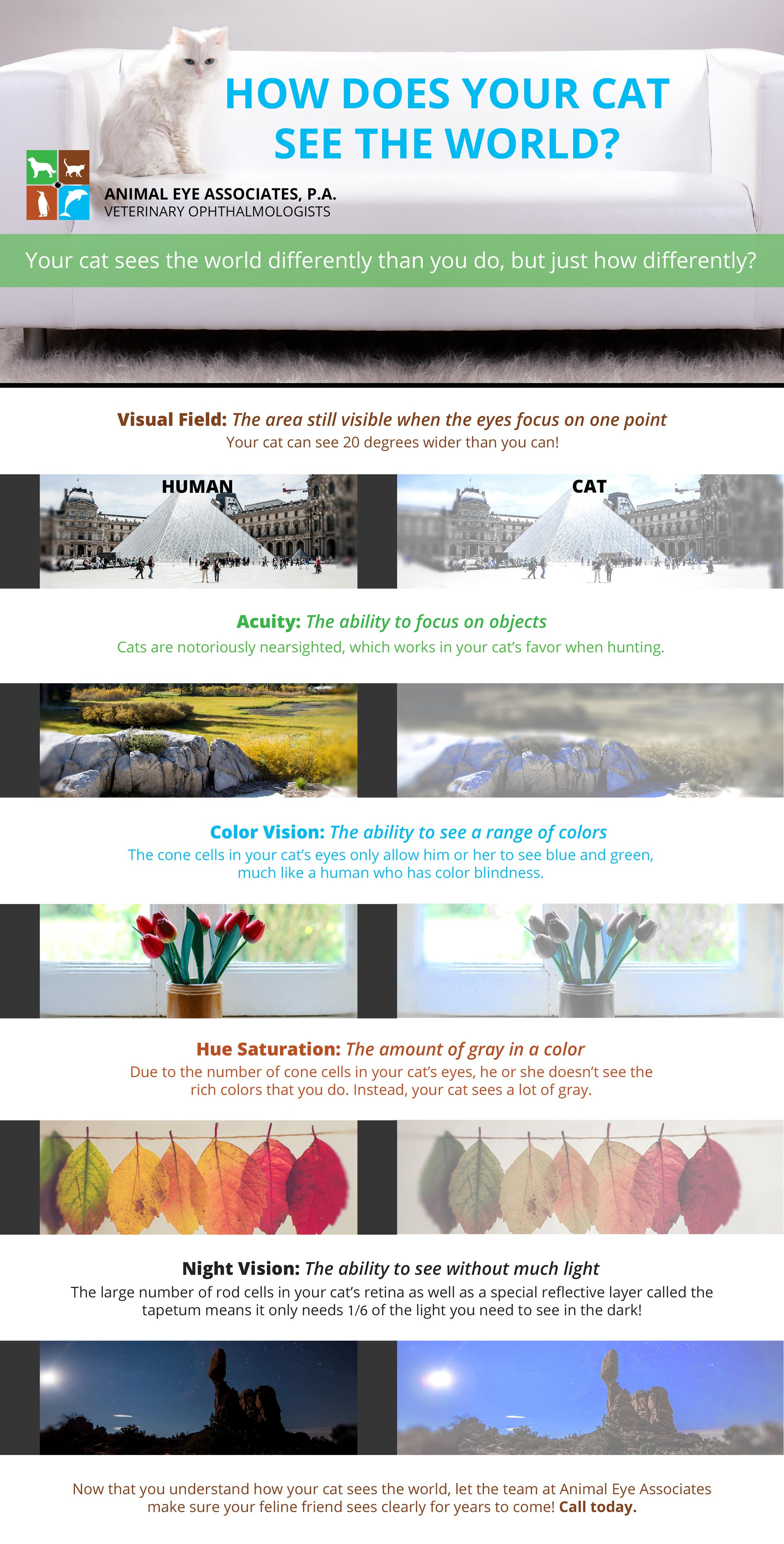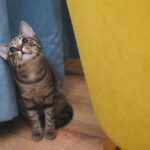 A detailed infographic comparing human and animal eye structures and vision capabilities, highlighting key differences in acuity, field of view, and color perception.
A detailed infographic comparing human and animal eye structures and vision capabilities, highlighting key differences in acuity, field of view, and color perception.
Humans heavily rely on sight, making it intriguing to imagine experiencing the world through different senses. While cats use all their senses to navigate their environment, their vision, although not primary like in humans, plays a crucial supporting role. Let’s delve into understanding what cat vision truly looks like.
Peripheral Prowess
Similar to humans and dogs, cats possess binocular vision, meaning both eyes work together to perceive a single image. However, the positioning of their eyes offers a unique advantage. Unlike some animals with eyes positioned more laterally, cats’ eyes face forward, much like ours, granting them depth perception.
Interestingly, cats boast a wider field of peripheral vision than humans, approximately 20 degrees more. This expanded peripheral view is invaluable for their survival, particularly in detecting motion. Cats are highly attuned to movement, enabling them to swiftly identify potential prey or threats in their surroundings. This acute motion detection is a cornerstone of their hunting prowess and environmental awareness.
Masters of the Night
While humans require technological aids like night vision goggles to see in low light conditions, cats are naturally equipped for nocturnal activity. Evolved as hunters in the twilight hours, their eyes have developed remarkable adaptations for maximizing light intake. Their pupils can dilate far wider than human pupils, allowing significantly more light to enter the eye. Observing a cat’s fully dilated pupils reveals the extent of this adaptation – their eyes can become almost entirely black.
Beyond pupil dilation, cats possess another ingenious mechanism for night vision. Their eyes feature a tapetum lucidum, a reflective layer situated behind the retina. This layer acts like a mirror, bouncing light that passes through the retina back into the eye, giving photoreceptor cells a second chance to capture it. The tapetum lucidum is responsible for the characteristic eerie glow or flash often seen in cats’ eyes in the dark, further enhancing their ability to see in dimly lit environments.
A World of Color (and Contrast)
Color perception relies on cone cells in the retina. Cats have significantly fewer cone cells than humans – only about one-fifth the number. Consequently, their color vision is limited compared to ours. Cats are believed to primarily see in shades of black and white, and they can perceive blue and yellow hues. However, they do not experience the richness and saturation of colors that humans do.
Instead of relying heavily on color, cats depend more on motion and contrast to distinguish objects. Their world is defined by subtle shifts in light and shadow, and movements that might escape human notice are readily apparent to them. This emphasis on motion and contrast aligns perfectly with their hunting strategies, where detecting subtle movements of prey is paramount.
Acuity and Focus
Visual acuity, or the sharpness of vision, is an area where humans outperform cats. Cats have a visual acuity that is only about 20-40% of that of humans. This means they are more nearsighted than humans and do not rely on sharp, detailed vision in the same way we do. While humans can discern fine details at a distance, cats perceive the world with a slightly blurrier focus, especially at long ranges.
However, this nearsightedness is advantageous for hunting prey up close. In combination with their exceptional senses of smell and hearing, slightly less sharp vision is not a hindrance. Cats use their vision to confirm information gathered by their other senses, such as smell and sound, creating a complete picture of their surroundings. Their other senses are highly developed to compensate for the differences in visual acuity compared to humans.
While cat vision differs significantly from human vision in terms of color perception and acuity, their adaptations in peripheral and night vision are perfectly suited to their predatory nature and crepuscular lifestyle. Understanding how cats see the world provides valuable insight into their behavior and needs. Just like humans, good vision is crucial for a cat’s well-being and safety. If you notice any changes in your cat’s vision, consulting with a veterinary ophthalmologist is essential to ensure their continued quality of life.


